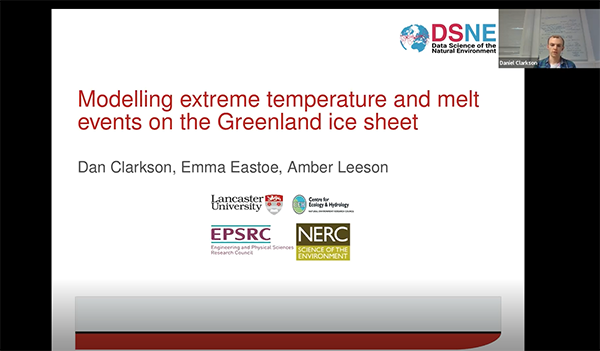Modelling extreme temperature and melt events on the Greenland ice sheet
Presenter
October 4, 2022
Event: Climate and Weather Extremes
Abstract
An impact of the rise in global temperatures caused by climate change has been an increased amount of melt observed on the world’s ice sheets. The Greenland ice sheet has had an accelerating contribution to sea level rise as a result, including large spatial extreme temperature events that cause large areas of the ice sheet to melt simultaneously. However, standard extreme value analysis methods are unsuitable for modelling surface temperatures due to a soft upper limit in temperatures around 0◦C and a large mass of observations just below this limit. The limit - a result of the melting point of ice and the complexities of the melt process - results in a poorly defined tail that greatly varies in shape across the ice sheet. Using MODIS satellite data, we use a Gaussian mixture model fit to the full range of observations to improve the fit in the upper tail. This gives a more contextual definition of an extreme event in light of the data, allowing estimation of melt as a probability rather than using a fixed melt threshold. The mixture model is then used as a marginal model for a Gaussian process and later a Spatial Conditional extremes model to understand the dependence of surface temperatures and the nature of spatial melt events. We also use regression techniques to examine the relationship between the mixture model parameters and spatial covariates, allowing us to extend the marginal structure to new locations and informing our use of spatial dependence functions.
